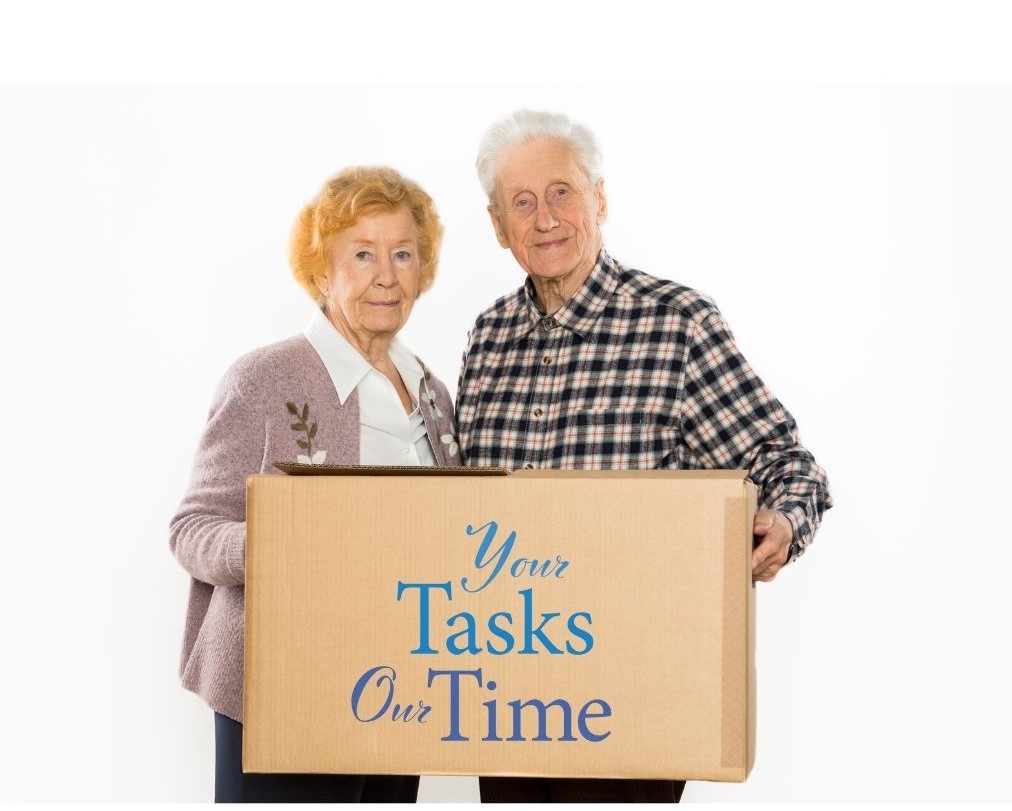Please visit our Events tab under News & Events to check out some great photos and a summary of our 2023 Winter Social held in Devon!

Our chapter was chosen by NAPO National to be the NAPO Chapter Spotlight on the members-only portion of its website for June 2023. Tom Harper, our newly inducted Board President, had the pleasure of sharing more about GPC, and this is what he shared:
Here to share about NAPO Greater Philadelphia is current President @Tom Harper!
Tell us about yourself: “I am the newly inducted president of NAPO-GPC, after serving as our chapter’s Director of Professional Development. I ran unopposed. It’s either because I impressed everyone with my amazing lack of experience, or because I missed a meeting and was justly “voluntold”; I’m not sure which. I think I’ll stick around, though, given the great people and, of course, the wonderful perks (e.g., no one else can read the anti-trust policy but me).”
What makes your chapter special? “Well, it could be the fact that we fully support one another professionally and personally, without any hint of ego or competitiveness. Then again, it could be the familial bonds that have been developed among all members, both veteran and new. Or it could be that we have the kindest, hardest-working, most caring, and best-looking members around. I’ll say all of the above.”
Are there any star volunteers you’d like to shine a light on? “I could pick any one of the nearly 50 chapter members we have, quite frankly, because they are all stars in their own right. Actually, I’m defying convention and picking the entire chapter (and not just to be self-serving because I could use a couple more stars on our Board). I’m a die-hard sports fan, and I believe it takes a full team effort to make any success happen. The Greater Philadelphia Chapter is successful because of its truly special, very dedicated members who want to see the chapter grow and thrive. I’m humbled to be president of this chapter – even if I have no idea how I got elected.”
Thank you, Tom, for sharing your wit and enthusiasm about NAPO Greater Philadelphia, and especially for your leadership and contributions to NAPO!
Courtesy of www.napo.net
By Darla Pompilio, (610) 847 5422, Your Tasks, Our Time

Do you have a parent or senior in your life that could benefit from downsizing their home but
you’re not sure how to approach the discussion? The topic of downsizing can be a difficult for
some. They may have to part with items that have memories attached. Or it may make them
feel like they are losing a piece of themselves. Below are some key aspects to ensure you have a
supportive and respectful discussion with the seniors in your life.
Before You Begin the Conversation
Before you start the conversation with your loved one, keep a few things in mind.
Be Respectful and Non-Judgmental
A Senior’s possessions represent a lifetime of memories. Dismissing their value as worthless is
equal to dismissing the senior’s value.
Don’t Lecture
Most seniors will respond well if you share your concerns and express your desire for them to
be in a safe and comfortable environment. It’s not about forcing them to get rid of things, it’s
about helping them to live their best life.
How to Begin the Conversation
How you start the conversation, and the tone you use, can impact the discussion either positively or negatively. Come from a place of support and love so they understand your desire to help them. Below is a list of questions you can use to get the conversation started.
Open-ended questions will be better to gain more information.
During the Conversation
Getting the conversation started is a step in the right direction. Keeping the conversation going in a positive direction is just as important. Remember these key points as you progress through your discussion.
Simply Listen
This is probably the most important step in the process. When seniors let go of their possessions, it often feels like a loss of control. By listening to their wants, needs and desires, you’re helping to ensure that they are maintaining control.
Ask Questions
Allowing seniors to tell stories about the past as you sort through their possessions can help ease some of the anxiety during the process of letting go.
Pick Your Battles
Arguing over every item is going to end with lots of hurt feelings and no progress. Letting go takes practice and patience. Keep reminding your loved one of the ultimate goal … for them to live their best life. It will get easier as they become more comfortable with letting go.
This process won’t be done overnight. It’s not uncommon to go through an entire home 2 to 3 times to achieve the desired goals. So be kind. Be patient. And remember, you may be in a similar situation yourself in the future.


By Russell Pitcairn, The Junkluggers, (215) 779 1644
Recently, I asked my network to share several of their favorite books. Below is a list of inspirational books along with their own key takeaway. Feel free to comment if you have read any of the books below. Let me know if you have a favorite book that has inspired you. Please enjoy!
“Who Moved My Cheese” by Spencer Johnson
Linda’s Key Takeaway: Be Flexible
“The Tipping Point” By Malcolm Gladwell
Linda’s Key Takeaway: Keep your eyes and mind open at a high level.
“The Purple Cow” By Seth Godin
Nate’s Key Takeaway: Companies that have grown into large successful organizations did so by offering a remarkable service or product. In order to succeed in the same industry, you must offer SOMETHING ELSE that is remarkable, stands out, and talks to the people. It’s the only way to be successful in the long run.
“The Go Giver” By Bob Burg and John David Mann
“A Complaint Free World” By Will Bowen
Linda’s Key Takeaway: Be aware, stop and surround yourself with those that come up with solutions…not complaints.
“Wild: From Lost to Found on The Pacific Crest Trail” By Cheryl Strayed
Linda’s Key Takeaway: Get out of your comfort zone.
“Resilience” By Eric Greitens
“Never Split the Difference” By Chris Voss.
Russell’s Key Takeaway: If someone gives you a response you do not like, ask open ended questions like “Why?” or “How?” This may reveal key information, or may get the other person to come up with a different response.
“One Small Step Can Change Your Life” By Robert Maurer
Linda’s Key Takeaway: Move with intention and control.
“Welcoming the Unwelcome” By Pema Chodron
Darla’s Key Takeaway: The time we live in is a fertile ground for training in being open-minded and open-hearted. If we can learn to hold this falling apart-ness without polarization and without becoming fundamentalists, then whatever we do today will have a positive effect on the future.
“A Fine Mess” By TR Reid
Blair’s Key Takeaway: Understanding America’s tax system and an effective way to restructure it. Lower tax rates but eliminate deductions/ways people avoid them, but broaden the tax base/tax on spending of earnings.
By Kelly Galfand, JOY IN YOUR SPACE, 610-896-6896
My role as organizer usually involves helping people:
• live with less
• have more within easy reach
• love what they store.
One popular area I organize is wardrobe closets. Sometimes I’m hired to fix a physical problem; I solve storage challenges. Sometimes I am the necessary support as someone decides:
• what to keep
• where to donate or sell
• how to let clothes go.

In my experience, even when someone commits to trimming their wardrobe, there is one item they want to get rid of but (in their words) “can’t!” In these situations, what’s really behind their “can’t” is guilt.
When I hear a closet client say “I can’t get rid of this,” I know the clothing in question was either expensive, a gift, or it holds sentimental value.
• If the item was expensive… and they haven’t worn it (ever or enough), the struggle is about throwing good money away. But honestly, they’re wasting more money by storing this item. Waiting too long to resell something is not smart; the resale market pays more for recent purchases.
• Check out resale avenues like TheRealReal, PoshMark, Clothes Mentor, Plato’s Closet, and ThredUp depending on the item’s value.

• If the item was a gift… from someone they love, their love for the person is getting in the way of their ability to decide what they want in their life. They sometimes think that letting the item go is akin to rejecting the gift-giver’s love, kindness, or generosity. Trust me, your favorite aunt knows you love her even if you don’t love the winter hat she gave you. I always reassure clients that no one gives a gift in order to burden the recipient. A recipient’s only responsibility is to be gracious in accepting the gift.
• —You can always donate the item or its value to a charitable organization the gift-giver supports to lessen the pain of letting the item go from your life. Let it be a gift that keeps on giving — to someone else!

• If the item holds memories it will fall into one of two categories:
• Clothing from the person’s own life (even if it was someone else’s at some point)
When I come across these sentimental clothes, the first question I ask is: Will you still wear it? If the answer is “yes,” it can stay.
If the answer is “no,” then I suggest the t-shirt, wedding gown, or cheerleading skirt move to a spot more suitable to memories and nostalgia.
• Clothing that holds memories may have belonged to a deceased loved one. I help people navigate these sensitive areas often. What I counsel, is to keep only the sweatshirts, t-shirts, or hats that meant something to the departed and mean something still to you if you have room for it.
If it’s something you aren’t going to wear, display it to honor it in some way. Shadow boxes are wonderful conversation pieces and visual reminders of our ancestors’ legacies.
To me, your adored Uncle’s memory does not hinge on a single t-shirt…not even on his entire t-shirt collection. I recommend that if you let items go from your life (that belonged to someone you loved) decide how you will remember this person (in thought or deed) once you let the item go. Then be intentional in keeping their memory alive.

Infants grow fast — I’ve had piles of clothes to prove this fact. Nearly as fast as they’ve grown into their newest cute new outfits, they’ve outgrown them already! Having a plan for keeping up with this constant rotation will save you time in the future and reduce the stress of potential growing piles. Whether or not you hope to use the clothes for future children, here are a few quick-to-tackle tips for getting ahead of the clothing clutter.
Not saving anything? Get ahead of the clutter.
Determine the spot you’ll use for temporarily stashing outgrown items. I use a basket under my son’s crib, but you can use a paper bag, box, or large trash bag on a shelf or in a closet. The laundry room is a great place, too. From now on, every time you determine something no longer fits your child, put it in your temporary storage bin. Add to this bin until it’s full, then mark it with the approximate size(s), stick the box/bag in your car, and drop it off for donation. Likely you have friends with kids and could also drop off the box on a porch for hand-me-downs. More on donations at the end.
If you know you’ll be keeping some clothes for future children, read on.
Get Clothes Prepped for Future Kids
First, determine a spot you’ll use for temporarily stashing outgrown items. I use two baskets under my son’s crib, one for items I’m keeping and one for giving away, but you can use paper bags or boxes in the laundry room, on a shelf or in a closet, or large trash bags (clearly marked and stored out of reach of the littles), etc.
Next, Every.Single.Day and Every.Time you determine something no longer fits your child, decide if you liked this outfit/item and put it in the keep bin, if not, put it in your give-away bin. Add to these bins until full. Then transfer the give-away items to a box marked with the approximate size(s) and check out donation options below. For the clothes you’re keeping, transfer to a storage bin, vacuum sealed bag or other favorite storage solution. I tend to have extra diapers that are outgrown, so I fill diaper boxes with unused/outgrown diapers and clothing from roughly the same size. Taking 1 minute each day will save you the hassle of sorting through a huge pile later.
Options for Clothes You’re Not Keeping
Depending on your interest and time commitment, you have a few options in addition to those mentioned above. From approximately most to least time consumed:
Final Thoughts on Outgrown Clothing
It’s best to donate items you’d use again and toss anything too worn out. If your kids are older and aware of “favorite” pieces, go through this process with them, so they learn from you how to stay organized and be generous with their clothes! For the babies, an everyday, constant rotation keeps clothes that fit available and stops piles from accumulating to keep the nursery looking lovely.
